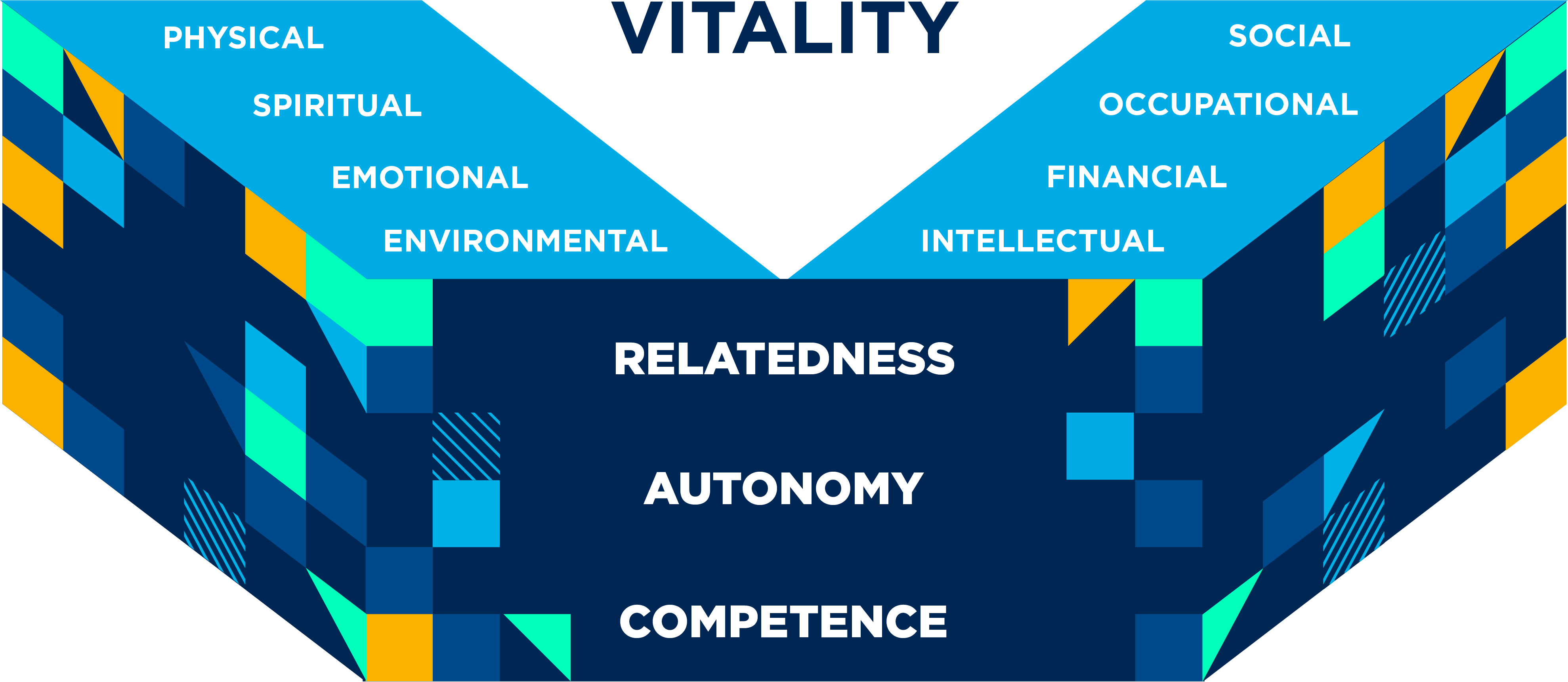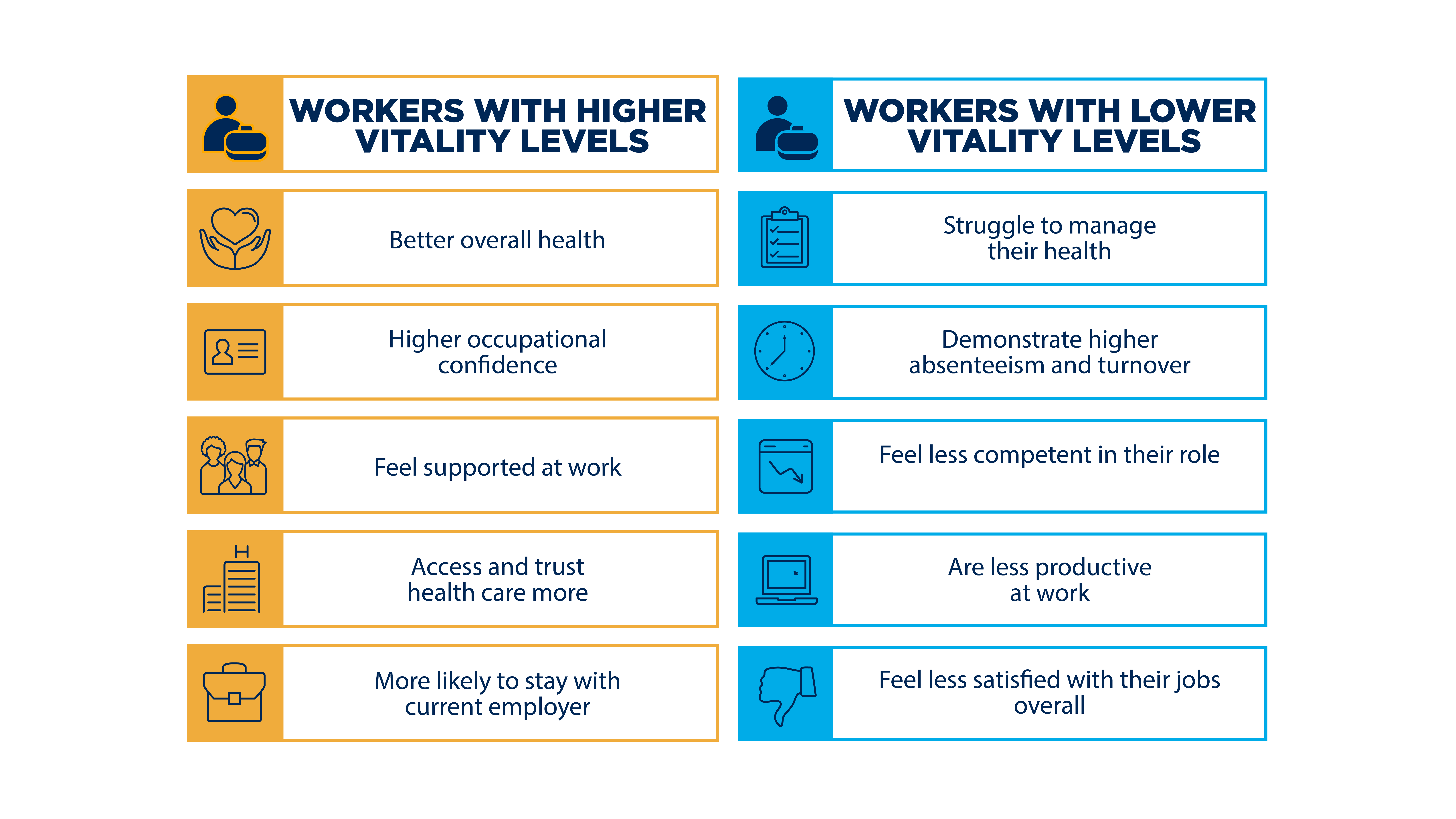The employee wellness programs of today must take into account every component of a person's overall health and well-being.

Employee wellness strategies and programs have traditionally leaned heavily into helping people improve their physical health (think: gym memberships, on-site smoking cessation, dietary guidance, and exercise plans). While there's no arguing that physical health is important, the employee wellness programs of today must take into account every component of a person's overall health and well-being.
As healthcare demands have evolved, companies recognize that creating a healthy workforce goes beyond striving for the health of individual employees. The goal is whole-organizational health, and that starts with a culture of engagement.
Fostering a Culture of Health and Business Growth Through Employee Engagement
Cigna has long supported a benefits approach that empowers individuals to attain wellness in each dimension of their lives. Physical, emotional, environmental, social, spiritual, occupational, financial, and intellectual well-being are all essential for people to achieve and maintain vibrant health.
These dimensions represent vitality—the capacity to pursue life with health, strength, and energy. Vitality affects how people live, how they perform at work, how they connect with others, and how they contribute to the whole.

To better understand the state of vitality in the United States, we surveyed 10,000 adults and found that vitality can be influenced by a number of things, including mental and physical health, sleep quality, connection with others, and relationships at work. The research also found that adults with high vitality were less likely to have chronic pain, clinical depression, or substance use issues. In contrast, those with low vitality had higher rates of chronic illness, including clinical depression, arthritis, digestive issues, and asthma. Half of those with low vitality (51%) said they experienced pain most days vs. 18% of those with high vitality.
When individuals can't come to work with optimal health, their performance suffers. The opposite is also true. Our research found adults with high levels of vitality are more motivated, productive, and confident than those without. Additionally, higher vitality is linked to longer tenure at work.

Building a culture of health means that policies, procedures, behaviors, and expectations (expressed and implied) all support employee vitality. This kind of culture builds a strong, resilient, and vibrant organization and can also benefit the bottom line. A recent study determined that employee health and well-being programs could yield a 47% return on investment (ROI) in 2022 and a 52% ROI by 2026.
As companies seek to recruit employees and optimize their talents, developing a culture of health becomes the new growth plan. That said, creating a culture isn't a one-way operation; employees must also participate. Organizations can offer various benefits, but everyone loses out if employees don't use them.
Leadership Sets the Tone for a Healthy Workforce
Changing organizational culture can be challenging, even when the purpose is reducing the risk of a serious illness or condition. Still, organizations must find methods to encourage employees to take charge of their wellness, according to Jill Vaslow, vice president of talent strategy and well-being at Cigna.
"There is a power in focusing on how employees bring their own accountability to engaging with health benefits." Jill Vaslow, Vice President of Talent Strategy and Well-being, Cigna
"Once the right benefits are in place, companies must orient around knowing that the employee has to be the accountable party; they have to lean in to understand how to maximize their well-being and their vitality," Vaslow says. "There is a power in focusing on how employees bring their own accountability to engaging with health benefits."
Just as the organization must create a healthy culture and employees must seek it out and take advantage, leaders must also model it and implement this work environment from the top down. In a healthy work culture, leaders acknowledge that no two people are the same, and there should be multiple methods for employees to access health care when, where, and how they need it.
Leaders must set the example by actively practicing openness and honesty with their teams, being vulnerable, and encouraging others to do the same. They must encourage open dialogue, embracing one-on-one interactions and social connectivity, while promoting work/life balance among team members.
Navigating Benefit Offerings for Optimal Health
Most employees are familiar with their company health plans, but to make them as effective as possible, companies must offer what employees need in ways they'll use. For example, physical well-being isn't useful only after someone becomes ill. Companies that partner with a benefits provider like Cigna can offer a range of preventive and wellness care to reduce the risks of someone developing an illness or to help them manage a chronic condition. With virtual and in-person options, as well as apps and self-driven activities, employees have more personalized support and information at their fingertips.
Cigna offers numerous ways to help your employees navigate the options that can help them achieve their best possible health and vitality:
- Consultative support helps optimize solutions through client-designated health engagement resources. Cigna Health Advisors can help improve health and lower costs by identifying conditions and behaviors that can increase employees' health risks. Health coaches work directly with employees to build relationships and engage them to adopt healthier behaviors. Nearly 4 out of 5 (79%) employees who worked with a Cigna Health Advisor met or progressed toward their wellness goals.
- Health care costs are an understandable concern for people, even when companies provide contributions. The Cigna Healthy Rewards program, available with medical and dental policies, offers discounts for health and wellness programs, including weight and nutrition support, hearing aids and exams, alternative medicines such as acupuncture and massage, and over-the-counter wellness products. Employers can also offer rewards to employees based on engagement achievements. Beyond a specific goal, such as weight loss, achievements include employees understanding their health incentive opportunities, tracking their progress, and taking action to improve their health.
- Data and analytics are at the forefront of many health care decisions today. By partnering with Cigna, employers are empowered to take a data-driven approach to better understand the health consumer journey and improve employee health outcomes. Companies can leverage data to identify risks and alleviate health disparities within their workforce and make use of predictive analytics to help employees navigate chronic conditions.
- Organizations can further support employee wellness by allowing flexibility to attend physical and mental health checkups during the workday or via virtual care options. They can also create opportunities for social interaction among teams in the modes those team members prefer.
Meeting Your Employees Where They Are
Gym memberships are still a great way to encourage employees to stay active. But in today's complex world, companies must do more to meet employees where they are.
They have to focus on prevention and optimal health outcomes instead of just treatment. They need to offer pharmacological and technological innovations to make options accessible and personalized. And they need to find ways to scale investments in health that are in line with the balance sheet.
Investing in health and wellness programs that employees want and will use nurtures a healthy work culture that improves employees' well-being, accelerates business growth, and enhances the vitality of both.
For more insights, contact a Cigna representative or your broker today.

Research: Vitality Fuels a Healthy Workforce
By better understanding vitality and the factors that impact it, including mental health, employers have a path to more deeply recognize the unique needs of their people and make meaningful investments in workforce health.